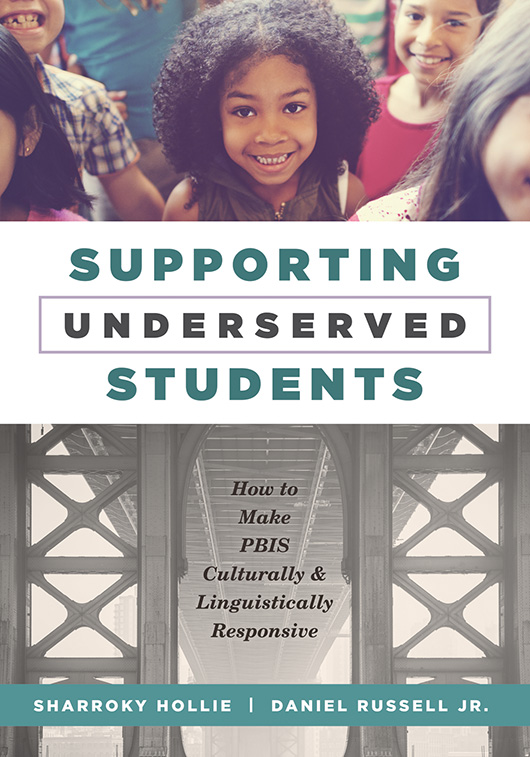Free Reproducibles
Supporting Underserved Students
Discover a clear two-step road map for uniting PBIS strategies with culturally and linguistically responsive teaching and learning in your classroom, school, or district.
Benefits
- Learn where PBIS falls short and why issues around discipline persist, especially with Black and Brown students.
- Gain clarity around culturally and linguistically responsive (CLR) teaching strategies in the classroom.
- Understand the difference between authentic and inauthentic CLR alignment to PBIS.
- Acquire practical steps, suggestions, and recommendations for being culturally and linguistically responsive in the classroom as well as across schools and districts.
- Give students the language, activities, and procedures to be situationally appropriate for school situations affected by PBIS in the classroom.
Table of Contents
Introduction: The Ubiquity of Positive Behavioral Interventions and Supports
Part 1: The Why of Culturally and Linguistically Responsive PBIS
Chapter 1: The Basics of a CLR-Managed Classroom
Chapter 2: PBIS and Authentic Cultural and Linguistic Responsiveness
Chapter 3: The Need for Authentic Culturally and Linguistically Responsive PBIS
Chapter 4: CLR-PBIS Alignment, Assessment, and Activation
Part 2: The How of Culturally and Linguistically Responsive PBIS
Chapter 4: CLR-PBIS Alignment, Assessment, and Activation
Chapter 5: Situationally Appropriate Opportunities Within PBIS
Chapter 6: The Language of Situational Appropriateness Within PBIS
Final Thoughts: A Change in Mindset to Enhance PBIS
Appendix: Abbreviations for Cultural and Linguistic Responsiveness
STUDY GUIDE
REPRODUCIBLES
Chapter 1
Chapter 4
- Figure 4.1: CLR-PBIS Fidelity Assessment Tool—Tier 1 (Universal Supports)
- Figure 4.2: CLR-PBIS Fidelity Assessment Tool—Tier 2 (Targeted Supports)
- Figure 4.3: CLR-PBIS Fidelity Assessment Tool—Tier 3 (Intensive Supports)
Chapter 5
- Figure 5.1: Sample CLR-Infused Minilesson on Behavioral Expectations
- Figure 5.2: Sample Behavior Pi Chart Aligned With CLR
- Figure 5.3: CLR Office Discipline Referral Decision Tree
Chapter 6
- Figure 6.1: Examples of Activities Using the CLR Formula
- Figure 6.2: Situationally Appropriate Behaviors for Traditional and Culturally Congruent Behavioral Expectations
- The Language of Situational Appropriateness Questionnaire
SUGGESTED RESOURCES
Books
- Buffum, A., Mattos, M., & Malone, J. (2018). Taking action: A handbook for RTI at Work. Bloomington, IN: Solution Tree Press.
- Canter, L. (2010). Assertive discipline: Positive behavior management for today’s classroom (4th ed.). Bloomington, IN: Solution Tree Press.
- Collado, W., Hollie, S., Isiah, R., Jackson, Y., Muhammad, A., Reeves, D., et al. (2021). Beyond conversations about race: A guide for discussions with students, teachers, and communities. Bloomington, IN: Solution Tree Press.
- Muhammad, A., & Hollie, S. (2012). The will to lead, the skill to teach: Transforming schools at every level. Bloomington, IN: Solution Tree Press.
Websites

